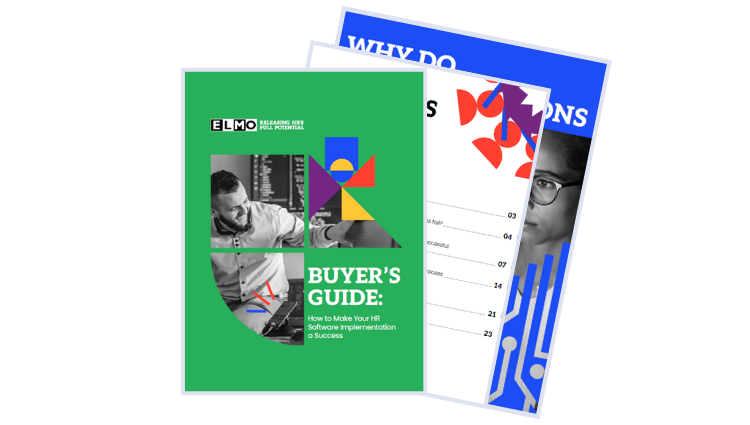Strategic Talent Acquisition in Post Covid Era
One of the most important factors in business success is hiring the right people for the right roles. This is more important as organisations continue to rebuild following the mass ...

One of the most important factors in business success is hiring the right people for the right roles. This is more important as organisations continue to rebuild following the mass disruption wreaked by COVID-19. Talent acquisition has always been the last – and potentially the most lucrative – the frontier of competitive advantage, and in this era, an organisation’s competitive edge will depend on its talent more than ever to reimagine and reinvent business operations.
Looking back, uncertainty has been a central theme of the past three years. Uncertainty over our health, the economy, and how the world would rebound from the global pandemic. It has not been an easy task for the HR industry. With no rulebook to follow, it has been the job of HR professionals to forge a path ahead in the middle of such instability. Despite the lifting of lockdowns and most COVID-19 regulations, a sense of uncertainty remains in 2023. The fear of a recession still looms, forcing many organisations to proceed with caution.
The talent acquisition mindset
In line with the rest of the HR function, talent acquisition can be a critical driver of business success when aligned closely with organisational strategy, according to experts.
Organisations need to be looking at their future state all the time, and budgets need to be flexible and responsive to market trends in order to meet the demands of the future.
6 key elements of an effective talent acquisition strategy
- Conduct workforce planning
- Build your employer’s brand
- Source and recruit job candidates
- Leverage recruitment technology
- Develop an effective onboarding program
- Utilise data analytics
What separates talent acquisition leaders from laggards?
Kevin Wheeler, a global expert in human capital acquisition and development as well as Founder and Chairman of the Future of Talent Institute, states that about 90% of organisations fall into the “laggard” category and only a very small percentage could be considered a leader in talent acquisition.
“Talent acquisition leaders aim to simplify the process of recruitment, and they are personalising the process to make it far more genuine and focused on the candidate,” Wheeler says. “They are actively trying to reduce the amount of bureaucracy involved in looking for and applying for a job, and they rely more and more on technology than they have in the past. These are the hallmarks of strategic talent acquisition functions, which are focused on constantly improving the process for the candidate.”
Most companies (which fall into the laggard category) focus on what will make it easier to get work done internally, which can sometimes shift the burden of work to the candidate. Instead, organisations need to make the experience of looking for a job as positive, constructive, and engaging as possible. “That’s really the big differentiator for companies to become leaders,” Wheeler adds.
What does talent acquisition cost?
It costs organisations $8000AUD on average to hire a new employee and, on average, respondents involved in recruitment spend 7 hours on reviewing and shortlisting applicants per new hire according to ELMO’s 2023 HR Industry Benchmark Survey Report. The report was based on a survey of more than 1200 HR professionals across Australia and New Zealand. The study, conducted in partnership with the Australian Human Resources Institute (AHRI), found an organisation’s average cost of hiring varies widely depending on job seniority but remains a considerable expense to businesses (see below). Furthermore, the results revealed that it takes 20 days on average to fill a vacant position.
Optimised or reactive?
Talent acquisition, at its highest levels of maturity, can be immensely effective in helping to execute corporate strategy and move a business forward. The talent acquisition practices mastered by high-performing companies are game changers for business, according to Robin Erickson, Vice President, and Talent Acquisition Research Leader at Bersin by Deloitte. These strategies can be progressively applied by organisations to successfully find the right talent to drive stronger business performance. There are four levels of maturity as organisations progress through the talent acquisition maturity scale (see below).
The lowest level of maturity (level 1) sees organisations meeting the basic requirements of talent acquisition, such as performing general sourcing and assessment of candidates. However, in such organisations talent acquisition rarely coordinates with HR, hiring managers, or other key stakeholders and tends to operate independently with little process or standardisation.
The second level of maturity is distinguished by a standardised but limited approach to talent acquisition. Key sourcing strategies are usually in place, with some integration between talent acquisition and HR as well as influence and engagement with hiring managers.
The third level of maturity is more integrated and evidence-based, with refined talent acquisition processes – such as automated and standardised candidate evaluations. The capabilities of organisations operating at this level are more advanced, with meaningful investment in analytics and artificial intelligence, as well as in training and professional development.
At the fourth and highest level of maturity, talent acquisition functions are striving for innovation and constantly refining their processes, with a specific focus on collaborating with the business functions to improve strategies, outcomes, and talent pools. A distinguishing feature of talent acquisition at this level is that they are strongly integrated into the business and nurture collaborative relationships with leaders at all levels.
High-performing talent acquisition strategies
In high-performing organisations, talent acquisition has evolved from a routine, regulatory-minded activity to a function of central strategic importance. These organisations exhibit the six common traits seen below.
- High-impact talent acquisition teams that build the workforce through integration with the business
- Existing employees are recognised as a strategic resource, and internal mobility is a part of the company culture
- Candidates are evaluated for work ethic, values, and potential as much as skills and past experiences
- Talent acquisition teams construct a personalised candidate journey
- Mature teams continuously regenerate thanks to a dedication to upskilling, informal learning, and professional growth
- Highly mature teams use artificial intelligence (AI) and predictive data analytics
How to build an effective talent acquisition strategy
There are a range of different models that organisations can adopt for developing a talent acquisition strategy. However, it is important to note there is no one “right” strategy, and there is certainly no ‘one size fits all’ solution. “The hardest part for many talent acquisition leaders is not jumping to what they perceive the best strategy should be,” says D’Amico. “You need to take the time to solicit feedback and assimilate that into the strategy. Delivering a strategy that produces results and incorporates stakeholder needs will make the change management easier, which will in turn make adoption easier.”
Another important key is to incorporate the business’ language into the strategy. In a sales organisation, for example, discuss the sourcing and recruiting piece of the strategy in terms of prospecting, qualifying, and closing – as those words make sense to the customer, says D’Amico. He adds that in healthcare, organisations couch terminology in terms of “outcomes” – which again is their native vernacular. In designing an effective talent acquisition process, consider what is the desired end state and why. He says there are four key steps in successfully getting to this desired end state (for more detail see D’Amico’s article on how to build a talent acquisition strategy):
- Assess and map current state
- Define resources needed and why
- Craft the right process
- Define the why of the change and plan the change management
5 ways to rebuild your recruitment strategy
- Re-evaluate your hiring plan
- Conduct a skills audit and address gaps
- Increase internal talent mobility
- Formulate a fail-safe recruitment process
- Leverage technology
Similarly, Wheeler says the most important element in building a sound talent acquisition strategy is to look at the future goals of the organisation. Key questions to ask here include:
- What are the organisation’s plans over the next three to five years?
- Do we have the current skills to do this?
- Where are we lacking most in skills – where are the skill gaps?
- How do we find the right people?
- When do we hire people?
- Do we look for people inside the company to develop skills instead?
The role of technology
Technology is having a significant impact on talent acquisition and creating significant efficiencies in many processes through automation, which reduces the amount of time HR and talent acquisition professionals need to spend on elements of the recruitment process.
Organisations across Australia and New Zealand are at varying stages of the recruitment technology journey, according to ELMO’s 2023 HR Industry Benchmark Report, which found that 47% of surveyed HR professionals have fully implemented technology solutions to assist with the process of recruitment. A further 49% are currently in the process of implementing technology, while 1% don’t know or are unsure if an applicant tracking system is applicable for their business and 3% are not considering technology at all to assist with recruitment.
The study also found that half of those companies not using technology to aid their recruitment processes are challenged by manual or inefficient processes, in comparison to 1 in 5 of those who are leveraging some sort of technology.
Talent acquisition is becoming increasingly data-driven, which is providing visibility into the talent acquisition process through the likes of click-through rates, drop-off rates, and other key metrics which help sourcing professionals understand the effectiveness of their process. Talent sourcing is particularly important, and technology is helping organisations reach talent in hitherto untapped ways.
The future of talent acquisition
Recruiters will increasingly need to become talent advisors, leveraging their expertise in how to source and recruit, providing market intelligence, and having a broader view of how individual hiring impacts the larger organisation. However, technology will play an increasingly important role in talent acquisition through automating processes, which will see a continued move away from talent acquisition being a transactional process with an increased focus on value.
Which tool(s) does your organisation use to improve the recruitment process?
Talent acquisition professionals will need to improve their skills in areas where they can add genuine value as technology continues to automate more elements of the recruitment process. The ease of use and decreasing cost of technology will drive wider adoption of tools to help us recruit. At the same time, it will mean recruiters have to spend less time managing transactional processes every day and which will free them up to function as talent advisors. In fact, the HR Industry Benchmark Report found technology would be helpful in automating administrative tasks.
ELMO Software is a cloud-based solution that helps thousands of organisations across Australia, New Zealand and the United Kingdom to effectively manage their people, process and pay. ELMO solutions span the entire employee lifecycle from ‘hire to retire’. They can be used together or stand-alone, and are configurable according to an organisation’s unique processes and workflows. Automate and streamline your operations to reduce costs, increase
efficiency and bolster productivity.
ELMO Recruitment helps to streamline the hiring process from job requisition through to offer acceptance. It enables organisations to build candidate sourcing capability, and also helps you refine recruitment workflows, screening questions and interview processes – all while promoting your value proposition to attract the best talent. By automating these key tasks, HR professionals can concentrate on workforce planning and strategic talent acquisition.
 HR Core
HR Core 













